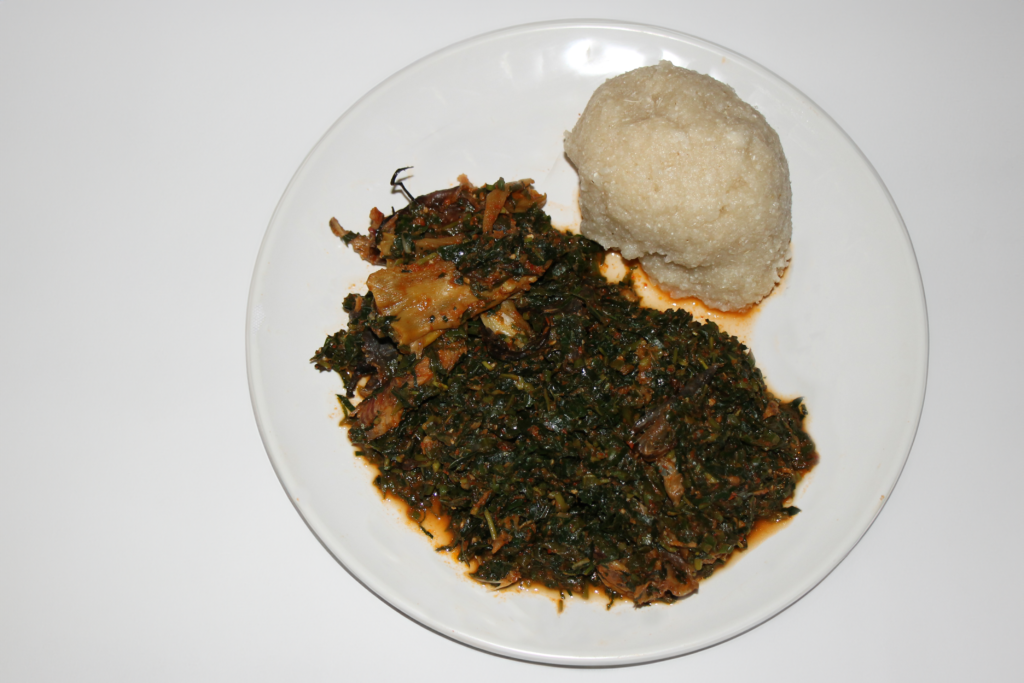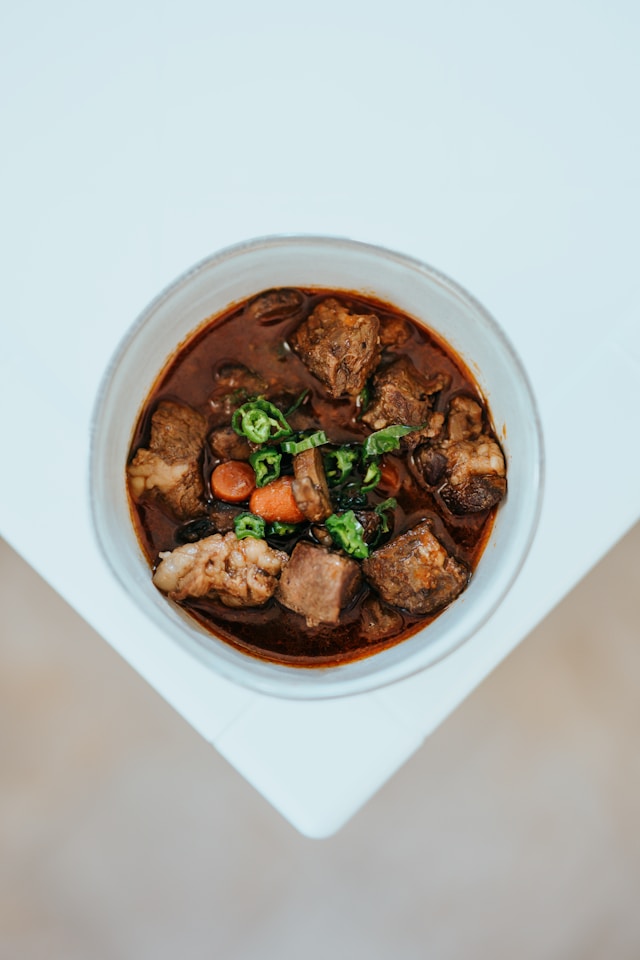Africa is the second largest continent in the world with 54 countries. Within each of these countries are different ethnic groups. Some countries have more than 200 ethnic groups. The culture, climate, food security, cost, and other factors in each region of Africa influence the choice of foods and methods of food preparation. Each region of Africa has a unique way of eating. Therefore, the eating patterns and diet in the continent are very diverse.
People of African descent who have migrated outside the African Continent often attempt to fuse their traditional pattern of eating (where they are coming from) with the pattern of eating in their host countries (where they migrated to).
On the other hand, people of African descent, whose ancestors were forcefully taken to Europe, North and South America because of slavery and have long settled in these regions, may have lost most of the food traditions of their ancestors. However, they may have retained some of the unique aspects of the traditional ways of eating from Africa while leaning towards the diets that are readily available in the West. Some examples that come to mind are the popular soul food.
Despite these regional, ethnic, and historical differences in the dietary patterns of people of African descent, there are still lots of basic similarities among them. This blog intends to reflect on similarities and present the upside and downside of the different kinds of food commonly eaten by people of African descent in different parts of the world.
The upsides
Regardless of ancestry, migration history, or ethnicity of different people of African descent, our traditional ways of eating tend to be rich in vegetables and pulses
Rich in vegetables
Vegetables are a major component of the African way of eating. The vegetables may be used in traditional salads, sauces, and soups. These comprise both starchy and non-starchy vegetables as well as leafy greens, alliums, or colorful vegetables.
The ample use of vegetables lends a very healthy side to the African way of eating. Vegetables generally have high nutritional content, packed with vitamins and minerals with anti-microbial, anti-inflammatory, and sometimes healing properties.
Rich in pulses
Pulses such as beans, lentils, peas, and nuts are commonly used to prepare sauces, soups, main dishes, and snacks. They are used in a variety of ways in African cuisines like cakes, puddings, etc.
Like vegetables, pulses are very nutrient-dense and rich in proteins, carbohydrates, oil, vitamins, and minerals. They also have anti-microbial, anti-inflammatory, and healing properties.
Pulses dry out easily. This makes it easy to store them for a long time and offers a sustainable food source. This is also essential to people of African descent who live in regions that are severely affected by food insecurity or people of African descent who want to travel with traditional foods to countries where they are migrating.
The downsides of the diet
Despite the upsides of the African way of eating, some downsides are very common to the various regions and ethnicities.
Rich in refined or processed carbohydrates
Processed or refined carbohydrates make up a major component of the diets of people from different parts of the African continent and diaspora.
Grains and tubers (e.g. cassava) are often refined or processed at home or industrially to prepare flour or flakes, which is often used to prepare thick pap (ugali), fufu, and breads. Sometimes, the flour or flakes are eaten as cereals.
Refined or processed carbohydrates are high in calories but low in nutrients. The processing whether done at home or industrially, removes most of the nutrients.
They are low in fibre and don’t offer the benefits of high-fibre unprocessed foods like vegetables.
They have a high glycaemic load or index. This means that they tend to raise blood sugar levels in people at risk of developing Type 2 diabetes or already have diabetes or are overweight.

Rich in saturated fats
Saturated fats such as palm oil, coconut oil, butter, and lard are commonly used to prepare foods by people of African descent.
Fats and oils are very calorie-dense, so eating lots of it may lead to weight gain.
While the effect of saturated fats on cardiovascular health is not very clear, it is still advised to limit their intake to maintain good heart health.
Too much salt
Salt is high in sodium and should be eaten in very minimal amounts. Salts are commonly used to preserve meats, fish, and vegetables. Using items that are preserved with salt increases the amount of salt in the diet.
Previous research in different parts of Africa shows that salt intake in African adults ranged from 6.8g to 11.3g per day. This is higher than the recommended daily intake.
Excess sodium is associated with an increased risk of high blood pressure which further increases the risk of developing cardiovascular problems like stroke, kidney failure in people with pre-diabetes.
Growing influence of industrially processed foods
People of African descent, regardless of where they live are exposed to industrially processed foods which are usually high in trans-fats and sodium-dense taste enhancers.
Baked foods and fast foods are high in trans fats like margarine, which are associated with an increased risk of developing cardiovascular diseases.
Taste enhancers such as mono-sodium-glutamate (MSG) in the form of powder or bouillon cubes are usually high in sodium. They are commonly used by people of African descent along with salt to enhance the taste of cooked foods. Combining these taste enhancers with salt increases sodium intake, which increases the risk of high blood pressure and worsens cardiovascular risk factors.
Moving ahead with healthier options
Now that you know the upsides and the downsides of the African pattern of eating, it is important to take steps to avoid or limit the downsides. Viedial is here to support you through this process.
Source
- Aworh O. C. (2018). From lesser-known to super vegetables: the growing profile of African traditional leafy vegetables in promoting food security and wellness. Journal of the science of food and agriculture, 98(10), 3609–3613. https://doi.org/10.1002/jsfa.8902
- Yalçın, T., Al, A., & Rakıcıoğlu, N. (2017). The effects of meal glycemic load on blood glucose levels of adults with different body mass indexes. Indian journal of endocrinology and metabolism, 21(1), 71–75. https://doi.org/10.4103/2230-8210.195995
- Willett, W., Manson, J., & Liu, S. (2002). Glycemic index, glycemic load, and risk of type 2 diabetes. The American journal of clinical nutrition, 76(1), 274S–80S. https://doi.org/10.1093/ajcn/76/1.274S
- Odia, O. J., Ofori, S., & Maduka, O. (2015). Palm oil and the heart: A review. World journal of cardiology, 7(3), 144–149. https://doi.org/10.4330/wjc.v7.i3.144
- Mizehoun‐Adissoda C, Houinato D, Houehanou C, et al. Dietary sodium and potassium intakes: data from urban and rural areas. Nutrition. 2017;33:35‐41
- Davis, J. N., Kumordzie, S. M., Arnold, C. D., Wessells, K. R., Nyaaba, K. W., Adams, K. P., Tan, X. J., Becher, E., Vosti, S. A., Adu-Afarwuah, S., & Engle-Stone, R. (2024). Consumption of Discretionary Salt and Salt from Bouillon among Households, Women, and Young Children in Northern Region, Ghana: A Mixed-Methods Study with the Condiment Micronutrient Innovation Trial (CoMIT) Project. Current developments in nutrition, 8(3), 102088. https://doi.org/10.1016/j.cdnut.2024.102088




